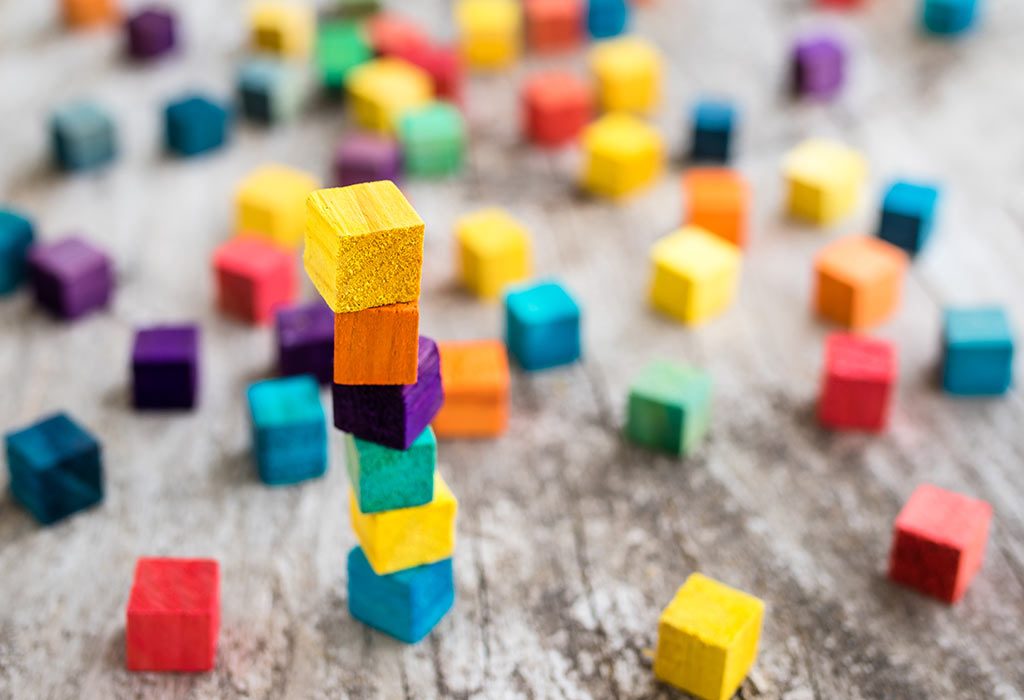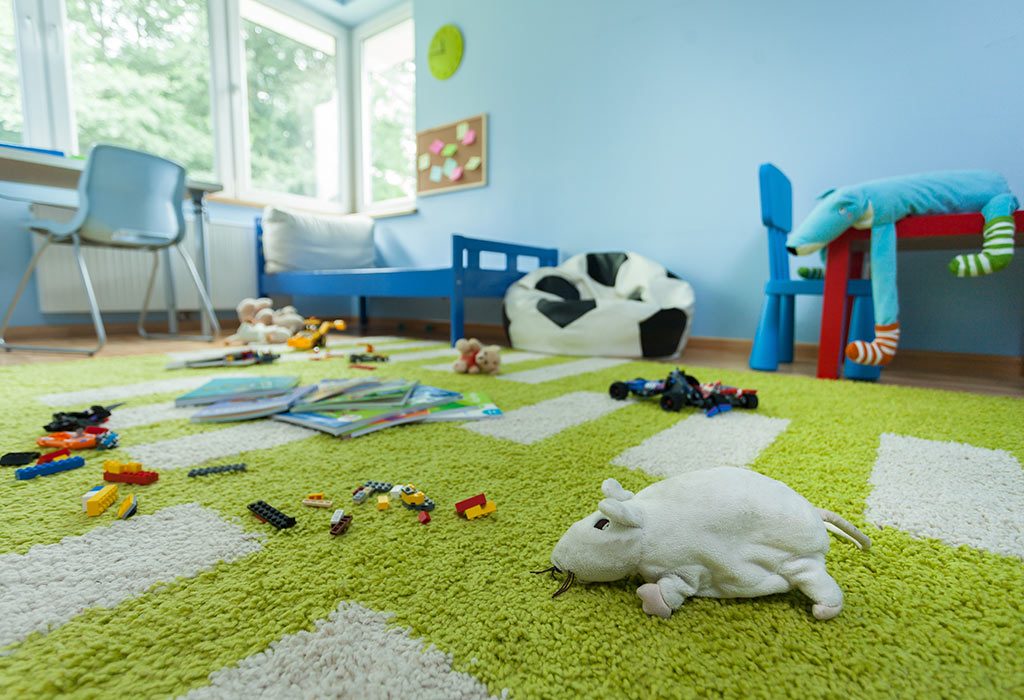With your little one growing up fast and already exploring the corners of the house, keeping him engaged is just as important as getting him up to speed with numerous life skills. The various activities for 1-year-olds at home are all envisioned with the aim of getting your child to improve his sensory perception, develop his language skills as well as handle his motor skills deftly.
Sensory Developmental Activities
To help you get started, we have put together a list of activities that can focus on your little one’s sensory development and enhance his growth rapidly.
1. An Edible Garden
Make a beautiful garden for your little one that he can eat up happily and turn this into one of the loveliest educational activities for your child.
How To Do
Make a batter out of chocolate and use that to create the mud for the garden in a bowl and spread around edible items like marshmallows and chocolate chips to make stones and pebbles. Let your kid pick out things he likes from his edible garden.
What Does It Teach?
Your child will prefer eating this mud instead of anything else while getting a good idea of keeping away from insects without being afraid of them.
2. Colourful Noodles
Turn snack time into playtime with this wonderful activity that fills stomachs and hearts together.
How To Do
Get some food colour and spaghetti from the market. Cook it and place it in separate plastic bags, with different food colour inside them. Mix them properly and combine them in a large container. Let your child go berserk with the noodles, eating some and playing with the rest.
What Does It Teach?
By slightly tweaking the flavour of each colour, you can let your child start associating colours with different senses, too.

3. Shaving Cream Colour Mix
Grant your little one the physical power of mixing colours and seeing a new shade evolve from them.
How To Do
Add two complementary colours in the corners of a few zipper seal bags and mix. Add some shaving cream inside them, and seal the bags tight. Let your child now play with the bag, squeezing it or shaking it as he wants. As the colours mix, ask him to name the new colour.
What Does It Teach?
The magic of mixing colours and seeing clean hands will be quite new for him, so will be the presence of new colours emerging from old ones and learning the combinations.
4. Water Bead Playtime
This is so much fun for kids that you would want to make this one of the daily activities for your little.
How To Do
Get the child-safe water bead kit from the market and form those beads inside a plastic bag. Add some water to it so that the beads can float around nicely within. Let your child play around with the bag. Later, ask him to separate the beads within by colour into separate sections.
What Does It Teach?
Apart from understanding concepts of colour, your child will be more familiar with the different textures and responsiveness to tactility after touching them.

5. Coloured Light Reflections
Let your child start learning the different colours and be excited about how beautiful they look together.
How To Do
Put together some lights inside a cardboard box, all of them wired together to a common connection. Wrap the box in a tin-foil to accentuate the connections. Turn the room dark and switch on the lights. Let your kid shout out the colours he can see.
What Does It Teach?
Not only will your child learn the colours quickly, but he will also be introduced to the concept of blending colours that will trigger his creative visualisation skills.
Language Activities
The moment your little one starts making attempts to say his first words and form sentences, indulging him in some language-based activities will work in your favour.
1. Textured Writing
Bring out the physical shape of the alphabets with one of the tastiest learning activities out there.
How To Do
Arrange crushed cereal or biscuits on a large piece of paper. Among these layers, teach your child to use his hand or finger to trace out the shape of an alphabet. After each alphabet, your child can eat some crumbs off the paper.
What Does It Teach?
Understanding the formation and shape of letters along with their sounds is extremely helpful for kids to know the foundation of the language.
2. Talking Telephone
Start having conversations with your child with a toy telephone or a real one.
How To Do
Use a toy telephone or a home speaker to have a conversation with your child. This works best if you are in separate rooms. Ask him to get something for you from another room.
What Does It Teach?
Being able to hold a conversation is a skill in itself and the feeling of doing so can work for the child’s benefit.

3. Command And Conquer
No better way to make sure your child understands the language better than to give him the right commands.
How To Do
Knowing what tasks your child can do by himself, give him commands in full sentences for completing them. Instead of merely saying “ball” and making a hand gesture, say “bring the ball from the bedroom” and let him figure it out.
What Does It Teach?
By comprehending full sentences, your child can unconsciously start separating the action verbs and objects, thus understanding sentence construction.
4. Monkey Sounds
This is one of the best indoor activities that can be quite rousing and funny for your child.
How To Do
Let your child know you are going to speak in a different language and he needs to mimic it accurately. Start making different sounds with your mouth and tongue, in as many ways as possible. Use your throat and let him figure out how to mimic them.
What Does It Teach?
Spoken word requires control over mouth and voice modulation, which can be easily taught with this.

5. Counting Things
Language is not restricted only to words and stories. You can bring in math into it as well.
How To Do
Teach your child how to count his fingers and toes and repeat them as often as you can. He might mix up the numbers, but it is fine as long as he can say them out loud. Combine this with counting other items, such as the number of biscuits or the steps in your house, and so on.
What Does It Teach?
The ability to count can instil confidence in the child and he will learn to count mentally rather quickly.
Gross and Fine Motor Activities
With your child moving around a lot more since he started walking, it is time to focus on his gross and fine motor skills with these activities.
1. Being A Dolphin
There’s no need to enter the water in order to swim like a fish.
How To Do
Arrange your bed with pillows and other soft items to create an underwater world. Let your child be the dolphin and let him swim around on the bed as you give him directions.
What Does It Teach?
Children begin to understand perspective and know the difference between the lateral and vertical separations.
2. Building Towers
Make use of those plastic blocks for one of the smartest physical activities for one-year-olds.
How To Do
Gather all the plastic blocks together and teach your child to balance them atop each other. Start with identical blocks. After a few months, you can change them to different sizes.
What Does It Teach?
The concept of balance and organisation can be easily learnt in this activity.

3. Ball Tub Drop
You won’t even need any instructions to give your kid for this one.
How To Do
Just place a tall barrel and a bucket full of balls in the middle of a room. Let your kid figure out what to do with it and he will start putting the balls inside the tub properly.
What Does It Teach?
Your child will understand the concepts of empty space and dimensions of objects.
4. Obstacle Course
Turn your kid into a soldier with this activity.
How To Do
Choose a long hallway in your home and pepper it with numerous obstacles such as cardboard boxes, pillows, and so on. Let your child reach from one end to the other as quickly as he can.
What Does It Teach?
This activity lets your kid understand the advantages of walking and crawling and the benefit of bipedalism.

5. Cycle Cleaning
Inculcate the discipline of cleanliness with this fun activity.
How To Do
In a bathroom or an open terrace, give your child some baby-safe soap solution and a wet cloth. Let him clean his tricycle completely in every way possible.
What Does It Teach?
He will learn to fold and roll the cloth in various ways to clean the smallest portions of the cycle.
Figuring out the best 12-month-old baby activities is not as difficult as it seems. Even the tiniest activities can be great fun for the little one and teach him a skill or two to aid his development ahead.









